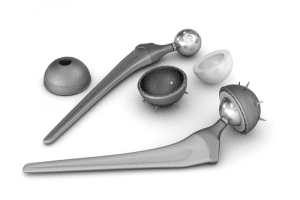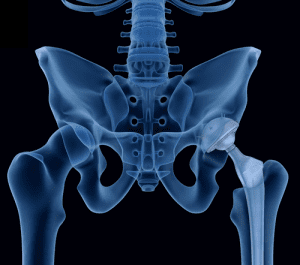
Smith & Nephew Recalls A Modular Neck Hip Prostheses and A Femoral Hip System. London Medical device maker, Smith & Nephew, is known for global distribution of hip, knee, and shoulder replacements. Most recently, the device maker recalled its hip replacement systems, mailing out safety notice letters to inform consumers on November 15, 2016. Specifically, the […]

Smith & Nephew Recalls A Modular Neck Hip Prostheses and A Femoral Hip System. London Medical device maker, Smith & Nephew, is known for global distribution of hip, knee, and shoulder replacements. Most recently, the device maker recalled its hip replacement systems, mailing out safety notice letters to inform consumers on November 15, 2016. Specifically, the recall involved the modular neck hip prostheses of the Modular SMF and Modular REDAPT Revision Femoral Hip Systems.
Smith & Nephew issued the recall due to what it described as “a higher than anticipated complaint and adverse event trend.” This is just the most recent recall issued over Smith & Nephew medical devices. In 2012, Smith & Nephew recalled the metal liner in is R3 Acetabular hip implant system.
Also, last year, an inspection of the Andover, Massachusetts manufacturing facilities of Smith & Nephew led to an FDA warning letter based on problems discovered during the inspection, including problems with arthroscopy (joint replacement) and gynecological devices. Joseph Matrisciano, acting district director for the FDA’s New England office explained that numerous Smith & Nephew devices were deemed “adulterated” because “methods used in, or the facilities or controls used for, their manufacture, packing, storage, or installation are not in conformity with the current good manufacturing practice requirements.” Also, Smith & Nephew “failed to establish and maintain procedures for verifying or validating corrective and preventive actions (CAPA) to ensure that such action is effective and does not adversely affect the finished device, as required by 21 CFR 820.100(a)(4).
The current recall involved debris originating when the device components rub together during normal activities, such as walking, and being released into patients’ bloodstreams, which may lead to chromium and cobalt ion release into the blood, leading to blood poisoning and genotoxicity (DNA damage). What’s more, muscles and bones may be damaged and the toxicity may reach other organs. For example, cobalt ions have caused cardiomyopathy (heart muscle disease). The metallosis, or metal poisoning, takes place when loosening of the device occurs and surrounding bone and muscle deteriorate.
It is also becoming more-well known that firms such as Smith & Nephew create budgets in advance for anticipated device problems, lawsuits, and settlements. Last year, Smith & Nephew allegedly set aside $203 million dollars over anticipation of problems, lawsuits, and legal expenses.
Meanwhile, Smith & Nephew are also offering to pay revision surgery costs, among other costs. Patients should always contact their doctors first and review their legal options. The personal injury attorneys at Parker Waichman LLP have been actively involved in a number of metal-on-metal hip lawsuits and continue to review potential lawsuits on behalf of individuals who have been affected by metal-on-metal hip devices and the serious and long-lasting injuries that have been tied to the devices.
Congress gave the agency authority over medical devices in 1976, allowing the U.S. Food and Drug Administration (FDA) a quick review process for new devices it deemed were substantially equivalent to already approved medical devices. This expedited process is known as a 510(k) review. Of note, in 1976, medical devices played a much smaller role in medicine.
In recent years, the 510(k) process has been criticized due to the complexity of the thousands of devices currently on the market-including metal-on-metal hip devices-, rendering the expedited process inadequate and in stark contrast to the very intense process for drug approvals. The FDA only mandates that medical device makers demonstrate that a device does what the maker says it does, and that the device poses no undue safety risks. Unlike the process for a new drug, efficacy proof is not required for a device approved under 501(k) rules.
According to the FDA, metal hip recipients may suffer from “adverse local tissue reaction” (ALTR), which is when the metal particles released from the implant cause damage to the bone and/or surrounding tissue. The FDA placed this medical device class under increased scrutiny after receiving reports of high failure rates and the release of high concentrations of metallic debris into patients’ bloodstreams. In fact, on January 17, 2013, the FDA released new guidelines for patients who have been implanted with all-metal devices and advised that symptomatic patients undergo routine physical examinations, diagnostic imaging, and metal ion testing. According to the agency, adverse events following surgery, regardless of the type of hip system implanted, include the following, noting that potential injuries may occur within three months following surgery (early symptoms) that may indicate the orthopedic device is potentially failing and that there is a need for revision surgery:
 Metal-on-metal hip implants have long raised safety concerns, in general, over mounting reports suggesting that these types of devices allegedly have a tendency to fail early during the post-operative period. The devices notoriety over highly publicized recalls and lawsuits alleging that the devices caused health issues that required early revision surgery and other injuries. A number of studies have consistently revealed that these devices are more prone to failure. In addition to other known injuries, Dr. Jeff Cartwright, an orthopedic surgeon, Chairman of the Department of Surgery at Skagit Valley Hospital, and faculty member of Pacific Northwest University of Health Sciences previously wrote in North County Outlook that the metal-on-metal design may lead to a various issues when metal particles are released into the patient’s body depending on where the ions settle, such as:
Metal-on-metal hip implants have long raised safety concerns, in general, over mounting reports suggesting that these types of devices allegedly have a tendency to fail early during the post-operative period. The devices notoriety over highly publicized recalls and lawsuits alleging that the devices caused health issues that required early revision surgery and other injuries. A number of studies have consistently revealed that these devices are more prone to failure. In addition to other known injuries, Dr. Jeff Cartwright, an orthopedic surgeon, Chairman of the Department of Surgery at Skagit Valley Hospital, and faculty member of Pacific Northwest University of Health Sciences previously wrote in North County Outlook that the metal-on-metal design may lead to a various issues when metal particles are released into the patient’s body depending on where the ions settle, such as:
A number of manufacturers have recalled their metal-on-metal hip implants due to safety issues such as a high risk of failure and metal corrosion. One of the most publicized recalls was in 2010, when Johnson & Johnson’s DePuy unit globally recalled its ASR hip device. Smith & Nephew has also issued metal hip recalls. Many lawsuits have been filed over metal-on-metal hip implants on behalf of plaintiffs who allege that their metal hip replacement caused the need for early revision surgery, pseudotumors, pain, swelling, and elevated metal ion levels. Revision surgery is a complex, expensive, and painful surgery that requires more post-operative healing and therapy time.
The personal injury attorneys at Parker Waichman LLP offer free, no-obligation case evaluations. For more information, fill out our online contact form or call 1-800-YOURLAWYER (1-800-968-7529).


